The military standoff between China and India in Donglang area at the Sino-Indian border’s Sikkim section has lasted for a month.
China has insisted that India withdraws cross-border troops before any negotiations, while the Times of India reported on Friday that India had deployed 2,500 more soldiers to the area.
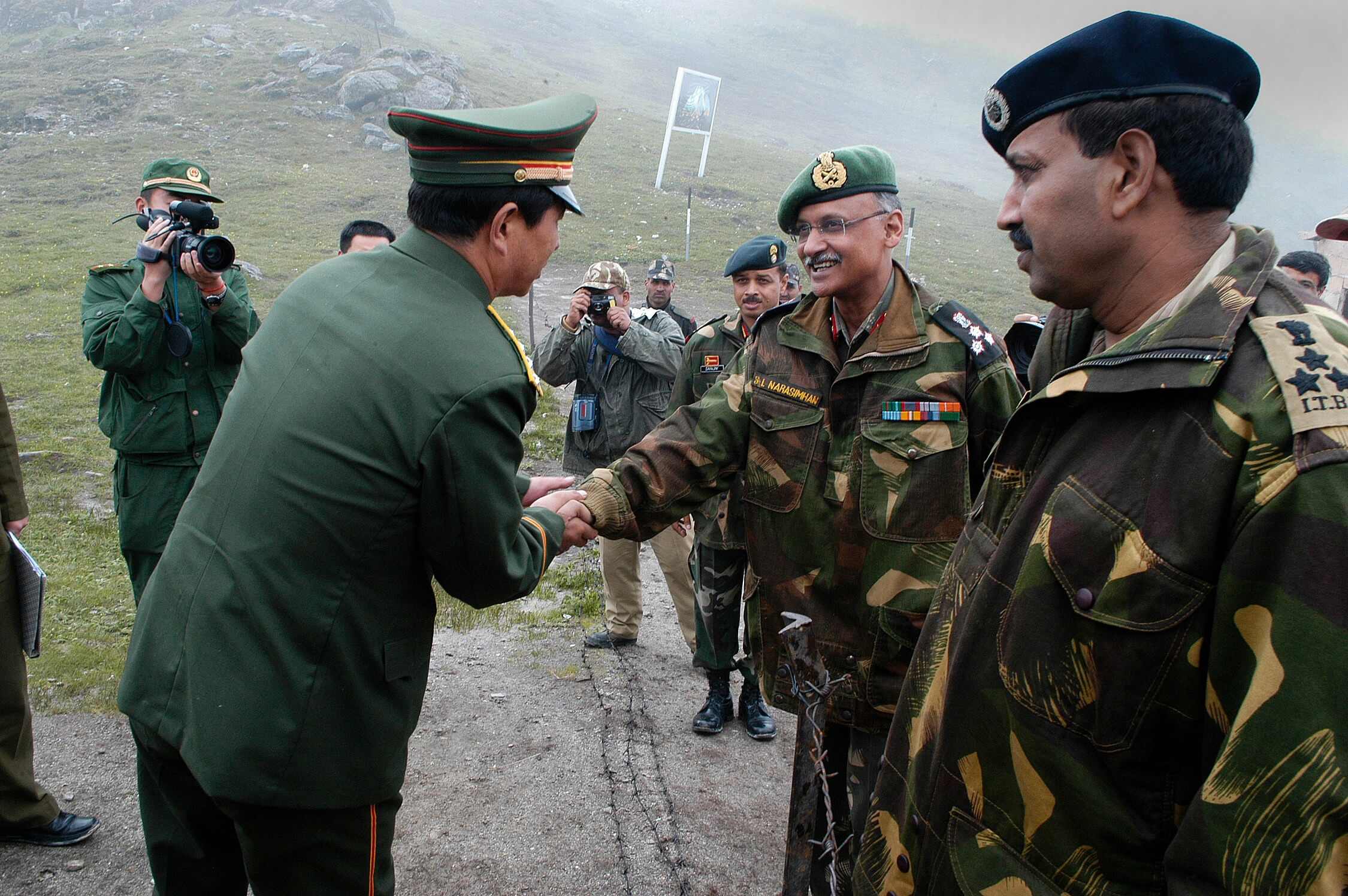
July 5, 2006: Chinese and Indian soldiers shake hands over the border before the 4,260-meter-high Nathu La pass in Sikkim opened for the first time in 44 years. /VCG Photo
How did the dispute come about? And one month on, how can it be resolved?
The dispute
The row began when Indian border troops intruded into Donglang area to obstruct road-building by Chinese workmen, claiming the construction threatened the security of both India and Bhutan.
It is not the first time military tensions have broken out along the 3,500-kilometer Sino-Indian border, but incidents in 2013 and 2014 took place in the disputed Ladhak area.
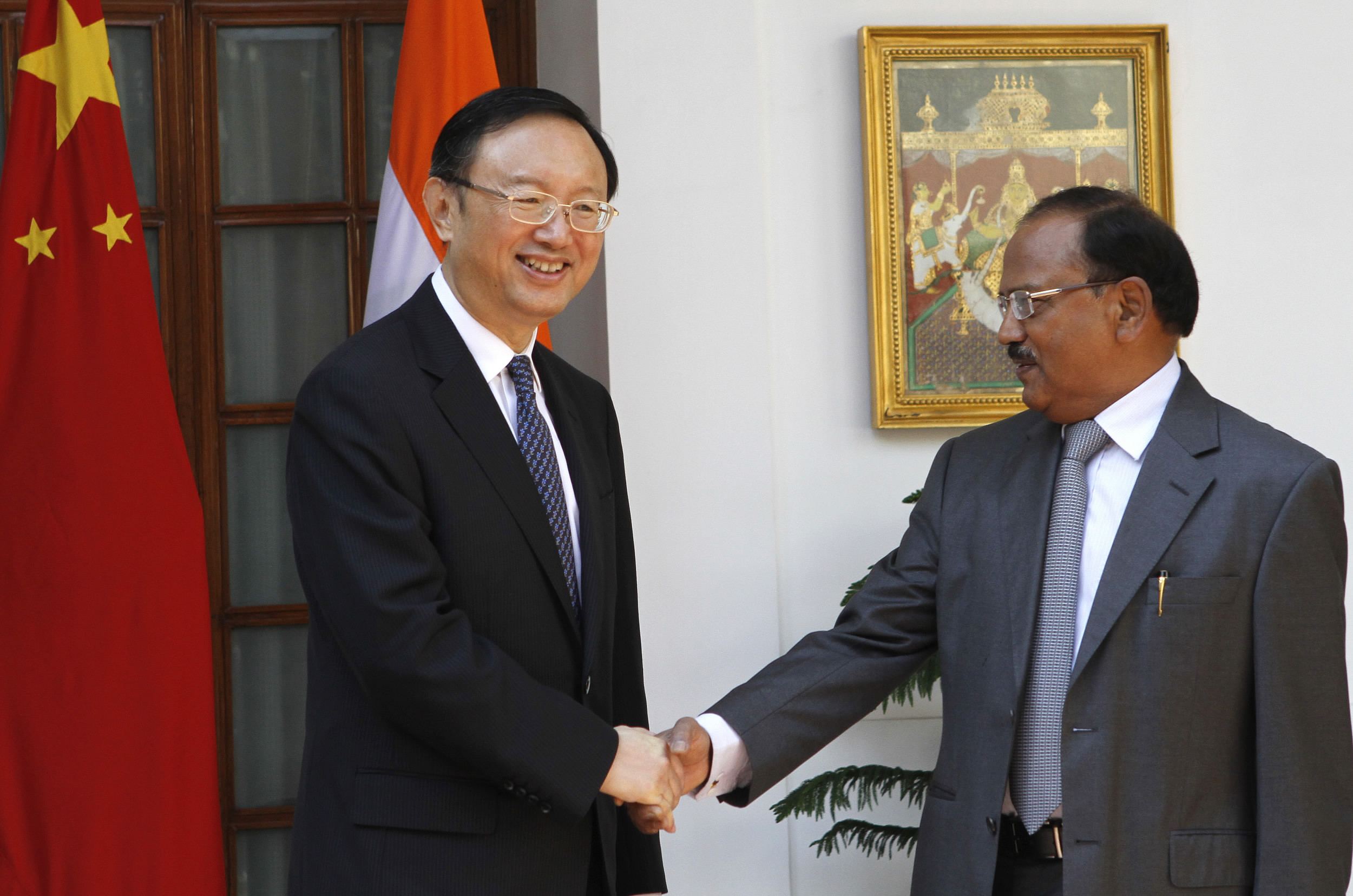
Chinese State Councilor Yang Jiechi meets Indian National Security Advisor Ajit Doval for talks on boundary issues at Hyderabad House on March 23, 2015 in New Delhi, India. /VCG Photo
Donglang area covers the tri-junction point of three countries: China, India and Bhutan. It has strong strategic importance to India as it links the country to its north-eastern territory.
However, this area hasn’t featured in 19 rounds of China-India Border Talks as it is not an undefined boundary line between India and China.
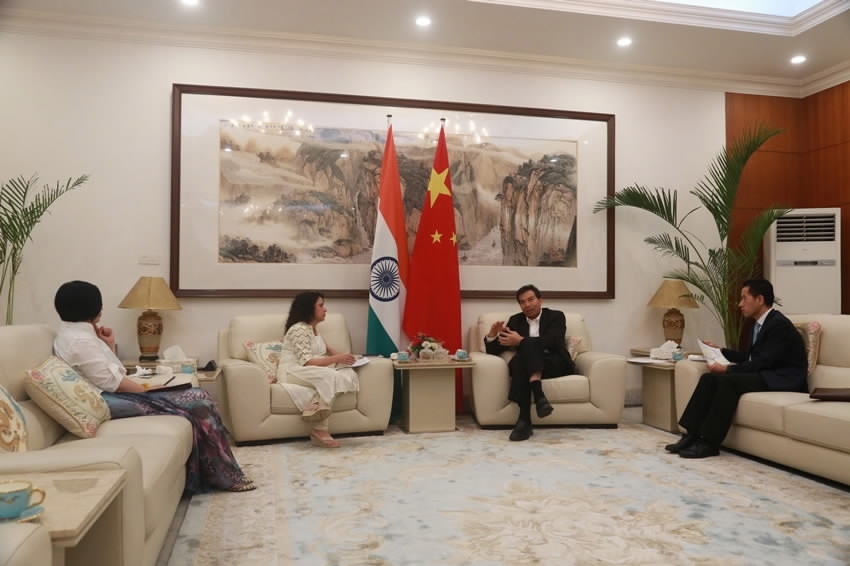
Chinese Ambassador to India Luo Zhaohui speaks with Indian media on July 4, 2017. /Photo via China's Embassy in India
India should not regard Donglang area as Bhutan’s territory. Even if disputes remain, they are China and Bhutan’s business rather than India’s concern.
China-India face-off
Beijing’s attitude is clear: India agreed on the 1890 Sikkim-Tibet convention stipulating that the Sikkim section of the China-India boundary commences at Mount Gipmochi, so Chinese construction within its own territory is legitimate.
Indian troops crossing into the Chinese side violated this agreement, Foreign Ministry spokesman Geng Shuang has said. Both Geng and Ambassador to India Luo Zhaohui have made clear there is no room for negotiation until India pulls back its troops.
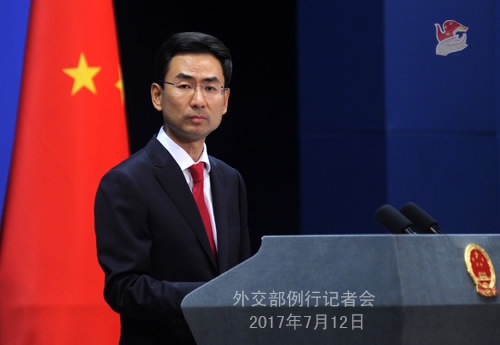
China's Foreign Ministry Spokesperson Geng Shuang at a press conference on July 12, 2017. /MOFA Photo
India’s Ministry of External Affairs has denied the Sikkim section has a defined boundary status and defended its action as an attempt to protect Bhutan and its own security.
India Today on Friday reported that the Modi government wished to lower tensions through diplomacy, yet despite attempts to dampen the issue, one Indian military leader said his country is ready for the “2.5 front war”. Another stated “today’s India is not the India of 1962”, referencing the Sino-India border conflict 55 years ago.
India also held the Malabar-17 naval exercises with the US and Japan in the Indian Ocean on July 14. Zhou Yongsheng, an expert with the Chinese Diplomatic Academy’s International Relation Center, argued these joint maneuvers were aimed at demonstrating the three countries’ military power.
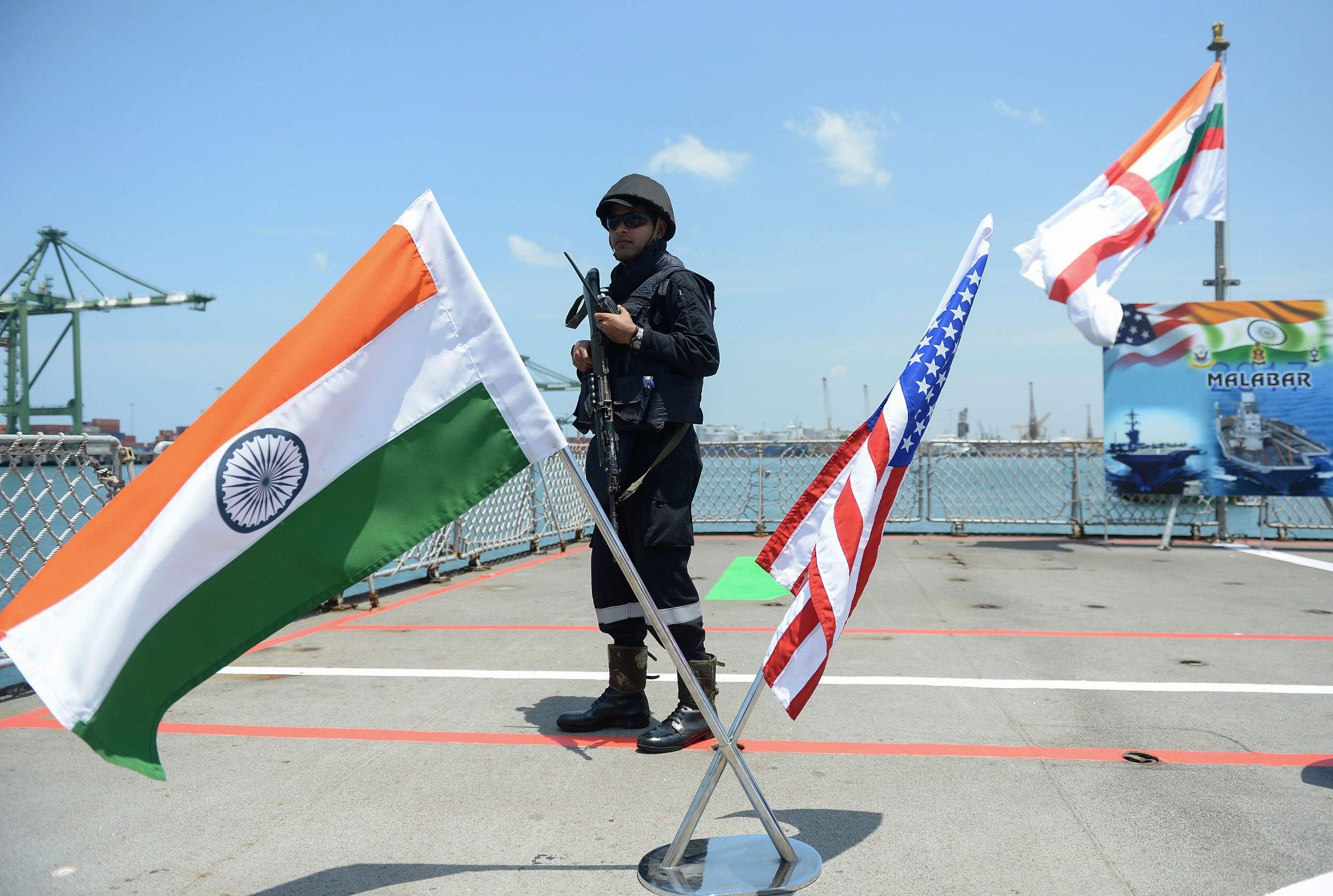
An Indian Navy sailor stands guard on the deck of the INS Shivalik during the inauguration of joint naval exercises with the US and Japan in Chennai on July 10, 2017. /VCG Photo
Bhutan’s role
As the China and India face-off persists, a key question has not been answered equivocally: what is Bhutan’s stance?
India claims that Bhutan is fully with India on the issue, but does Bhutan have the option of a free decision? As a country dependent on India for trade and security, it is hard for Bhutan to have an independent stance.
As The Wire analyzed, people in Bhutan thought India has for too long held back normalizing their country’s diplomatic ties with China, and Bhutan was more willing to have continuous border negotiation in a peaceful way with China.
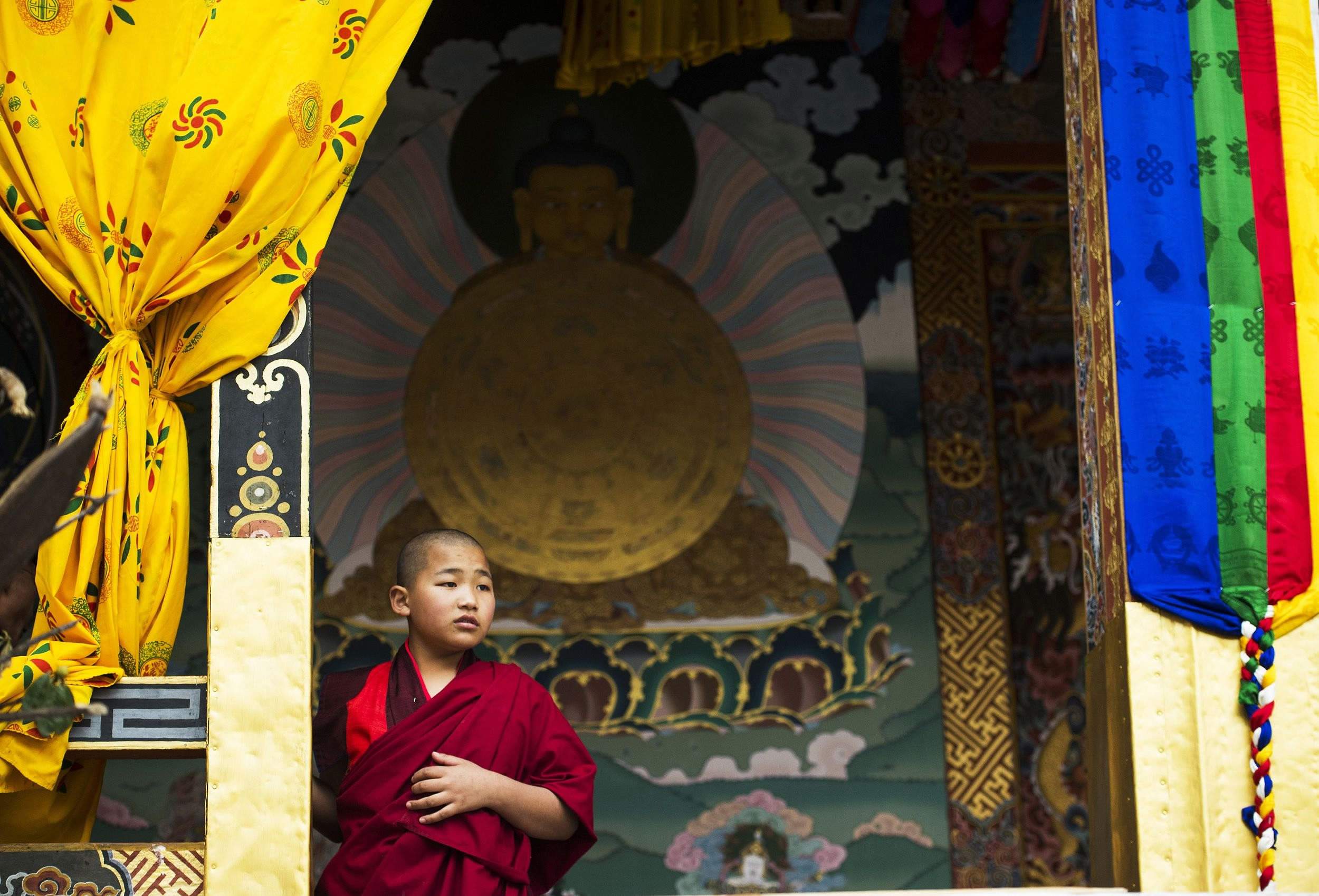
A young Buddhist monk stands in the entrance of a temple inside Tashichho Dzong, a fortress and Buddhist monastery, where several Bhutanese government ministries are located, April 13, 2016. /VCG Photo
An official statement issued by the Bhutanese government on June 29 only argues that the status quo on the boundary issue should not be changed.
What’s next?
Since both the Chinese and Indian governments claim to have a willingness to break the deadlock through diplomacy, the “ball is really in India’s court.” As Ambassador Luo stated: pulling Indian troops back across the border must be a precondition of future negotiations.
Neither side wishes to escalate the dispute. Beijing and New Delhi know that a continuation of the present situation can only damage bilateral relations; the issue should be resolved as soon as possible.
Related stories:
China asks India to withdraw troops from Doklam









